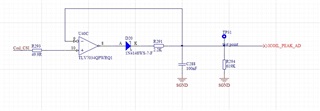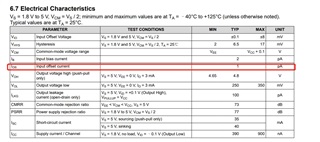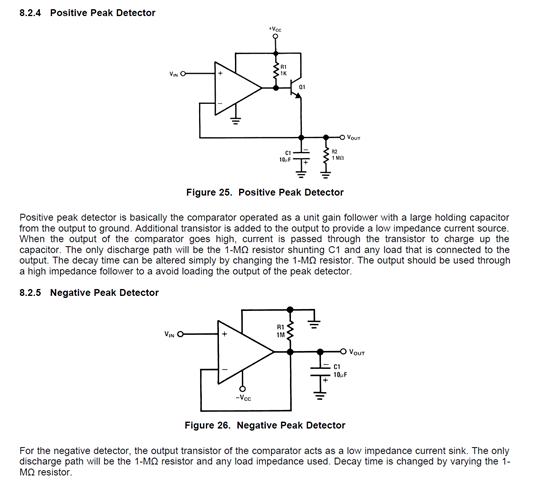Other Parts Discussed in Thread: TLV7034, TLV3502, LMV331-N
Hello:
The customer designed two peak sampling circuits using TLV7034 and TLV3502 respectively, with the same parameters. However, when using TLV7034, it was found that there was a 0.01V voltage drop on the R293 resistor (the corresponding current was 0.2mA), that is, the Ios at the forward input end of the comparator reached 0.2mA, but the Ios in the specification was only 1pA. How can we understand this phenomenon?
The above phenomenon does not exist when TLV3502 is used to replace TLV7034.





